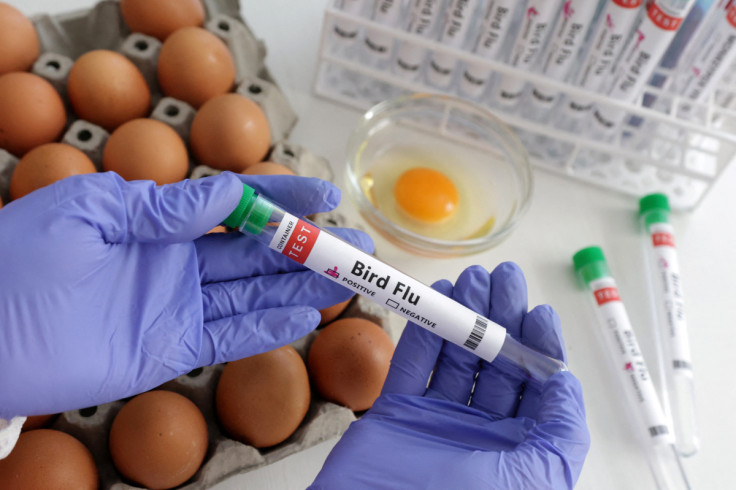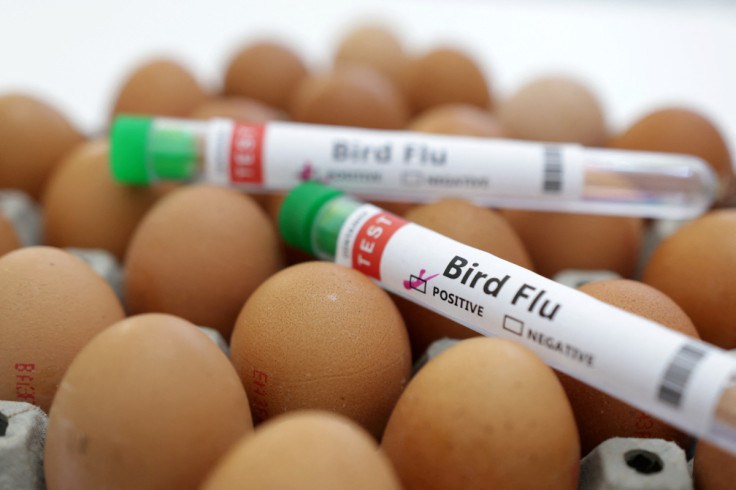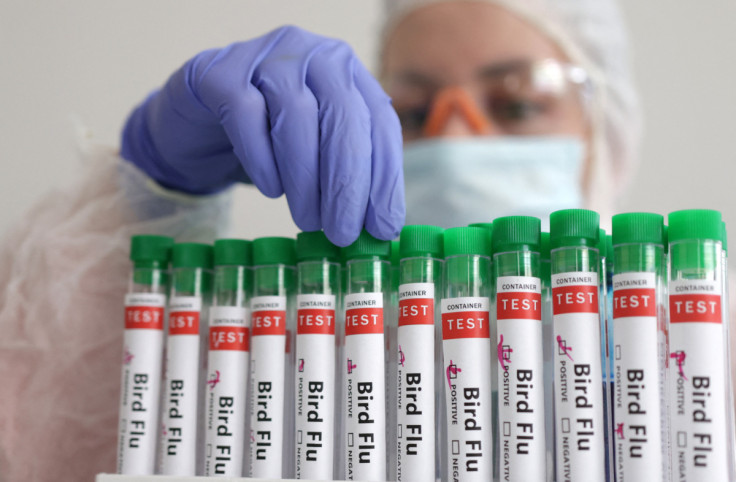Bird Flu Spreads To New Countries, Threatens Non-stop 'War' On Poultry

Avian flu has reached new corners of the globe and become endemic for the first time in some wild birds that transmit the virus to poultry, according to veterinarians and disease experts, who warn it is now a year-round problem.
Reuters spoke to more than 20 experts and farmers on four continents who said the prevalence of the virus in the wild signals that record outbreaks will not abate soon on poultry farms, ramping up threats to the world's food supply. They warned that farmers must view the disease as a serious risk all year, instead of focusing prevention efforts during spring migration seasons for wild birds.
Outbreaks of the virus have continued in North and South America, Europe, Asia and Africa, undefeated by summer heat or winter cold snaps, since a strain arrived in the United States in early 2022 that was genetically similar to cases in Europe and Asia.
Egg prices set records after the disease wiped out tens of millions of hens last year, putting a staple source of cheap protein out of reach to some of the world's poorest at a time the global economy is reeling from high inflation.
Wild birds are primarily responsible for spreading the virus, according to experts. Waterfowl like ducks can carry the disease without dying and introduce it to poultry through contaminated feces, saliva and other means.
Farmers' best efforts to protect flocks are falling short.
In the United States, Rose Acre Farms, the country's second-largest egg producer, lost about 1.5 million hens at a Guthrie County, Iowa, production site last year, even though anyone who entered barns was required to shower first to remove any trace of the virus, Chief Executive Marcus Rust said.
A company farm in Weld County, Colorado, was infected twice within about six months, killing more than 3 million chickens, Rust said. He thinks wind blew the virus in from nearby fields where geese defecated.
"We got nailed," Rust said. "You just pull your hair out."
The United States, Britain, France and Japan are among countries that have suffered record losses of poultry over the past year, leaving some farmers feeling helpless.
"Avian flu is occurring even in a new poultry farm with modern equipment and no windows, so all we could do now is ask God to avoid an outbreak," said Shigeo Inaba, who raises chickens for meat in Ibaraki prefecture near Tokyo.
Poultry in the Northern Hemisphere were previously considered to be most at risk when wild birds are active during spring migration. Soaring levels of the virus in a broad range of waterfowl and other wild birds mean poultry now face high risks year round, experts said.
"It's a new war," said Bret Marsh, the state veterinarian in the U.S. state of Indiana. "It's basically a 12-month vigil."
In a sign the threat is expected to persist, Marsh is seeking funds from Indiana's lawmakers to hire an additional poultry veterinarian and poultry health-specialist. Indiana lost more than 200,000 turkeys and other birds over the past year, while total U.S. deaths top 58 million birds, according to U.S. government data, surpassing the previous 2015 record.
The virus is usually deadly to poultry, and entire flocks are culled when even one bird tests positive.
Vaccinations are not a simple solution: they may reduce but not eliminate the threat from the virus, making it harder to detect its presence among a flock. Still, Mexico and the EU are among those vaccinating or considering shots.
GLOBAL PROBLEM
Wild birds have spread the disease farther and wider around the world than ever before, likely carrying record amounts of the virus, said Gregorio Torres, the head of the science department at the Paris-based World Organisation for Animal Health, an intergovernmental group and global authority on animal diseases. The virus changed from previous outbreaks to a form that is probably more transmissible, he told Reuters.
"The disease is here to stay at least in the short term," Torres said.
Torres could not confirm the virus is endemic in wild birds worldwide, though other experts said it is endemic in certain birds in places like the United States.
While the virus can infect people, usually those who have contact with infected birds, the World Health Organization says the risk to humans is low.
The form of the virus circulating is infecting a broader range of wild birds than previous versions, including those that do not migrate long distances, said David Suarez, acting laboratory director of the U.S. government's Southeast Poultry Research Laboratory in Georgia.
Such infections of "resident" birds are helping the virus to persist throughout the year when it didn't previously, he said.
Black vultures, which inhabit the southern United States and previously avoided infections, are now among the species suffering, said David Stallknecht, director of the Southeastern Cooperative Wildlife Disease Study at the University of Georgia.
The virus has also infected mammals like foxes, bears and seals.
"We all have to believe in miracles," Stallknecht said, "but I really can't see a scenario where it's going to disappear."
CROSSING BORDERS
High virus levels in birds like blue-winged teal, ducks that migrate long distances, helped spread the virus to new parts of South America, Stallknecht said.
Countries including Peru, Ecuador and Bolivia in recent months reported cases.
Ecuador imposed a three-month animal-health emergency on Nov. 29, two days after its first case was detected, the country's Ministry of Agriculture and Livestock said. So far, more than 1.1 million birds have died, the ministry said.
Cases in Bolivia put the disease close to poultry giant Brazil.
"Everyone is focused on preventing the flu from reaching our country," said Gian Carlos Zacchi, who raises chickens for processor Aurora in Chapec? in Brazil's Santa Catarina state.
Some experts suspect climate change may be contributing to the global spread by altering wild birds' habitats and migratory paths.
"The wild bird dynamics have shifted, and that's allowed the viruses that live in them to shift as well," said Carol Cardona, an avian flu expert and professor at the University of Minnesota.
Farmers are trying unusual tactics to protect poultry, with some using machines that make loud noises to scare off wild birds, experts said.
In Rhode Island, Eli Berkowitz, an egg producer and chief executive of Little Rhody Foods, sprayed the disinfectant Lysol on goose poop on a walkway of his farm in case it contained the virus. He also limits visitors to the farm, a more traditional precaution.
Berkowitz said he is bracing for March and April when migration season will pose an even greater risk to poultry.
"You'd better buckle up and hold on for your dear life," he said.


© Copyright Thomson Reuters 2024. All rights reserved.





















